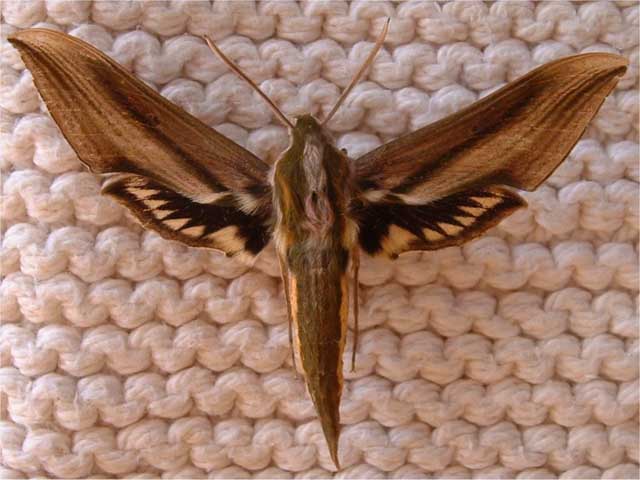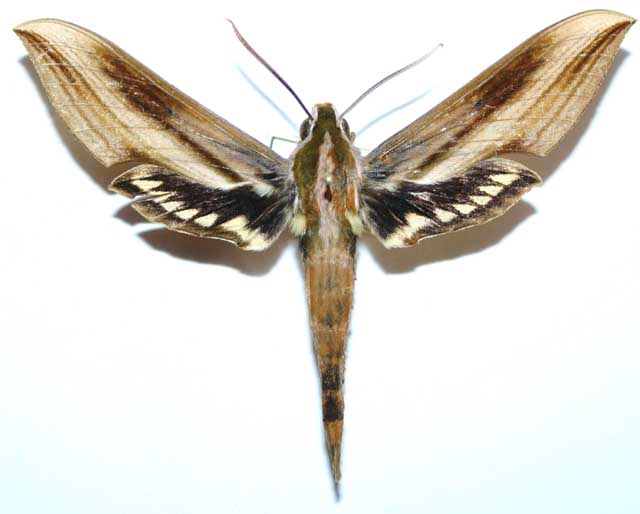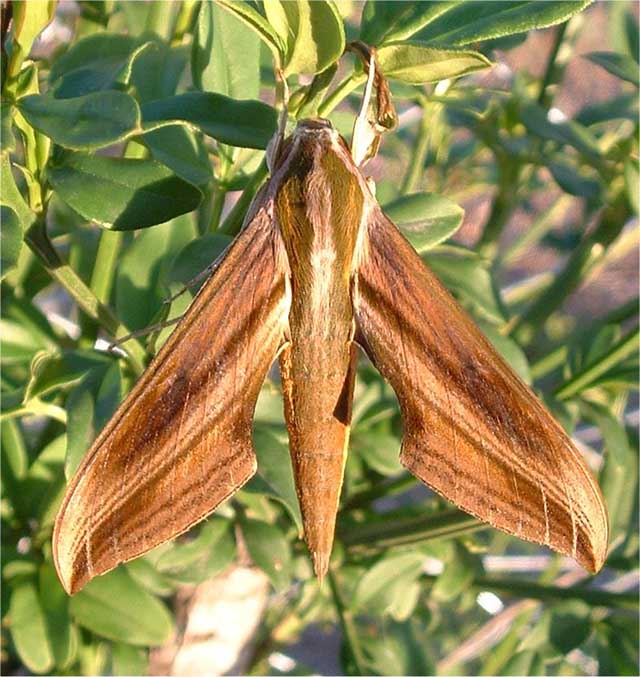Xylophanes schreiteri
|
|
Updated as per
AN ANNOTATED CHECKLIST OF THE SPHINGIDAE OF BOLIVIA, October 2007
Updated as per More, Kitching and Cocucci's Hawkmoths of Argentina 2005, October, 2007
Updated as per personal communication with Fernando Penco, Argentina, May 2008
Updated as per personal communication with Nigel Venters (wingspan: 71mm, Tafe de Valle, Tucuman, Argentina, November 26, 2008, 2000m), February 12, 2009
Updated as per personal communication with Ezequiel Bustos (Shilap revta. lepid. 43 (172) diciembre, 2015, 615-631 eISSN 2340-4078 ISSN 0300-5267), January 4, 2016
|
Xylophanes schreiteri
Clark, 1923

Xylophanes schreiteri, Tafe de Valle, Tucuman, Argentina,
wingspan: 71mm, November 26, 2008, 2000m, courtesy of Nigel Venters.
This site has been created by
Bill Oehlke at oehlkew@islandtelecom.com
Comments, suggestions and/or additional information are welcomed by Bill.
TAXONOMY:
Family: Sphingidae, Latreille, 1802
Subfamily: Macroglossinae, Harris, 1839
Tribe: Macroglossini, Harris, 1839
Genus: Xylophanes Hubner [1819] ...........
Species: schreiteri B. P. Clark, 1923
|
MIDI MUSIC
.....It's a Wonderful World.....
copyright C. Odenkirk
ON.OFF
<bgsound src="world.mid" LOOP=FOREVER>
|
DISTRIBUTION:
Xylophanes schreiteri (wingspan: approximately 71-92mm) flies in
Argentina (specimen type locality) and
Bolivia:
Cochabamba: Comarapa (1000-1700m); Santa Cruz:
Ipati (1000m) and Valle Grande (2000-2400m); southern
Bolivia (2400-2600m);
Argentina: Cordoba (384m),
Jujuy: Termas de Reyes (1311m), Tucuman: Quebrada de Lules; Cochuna (FP); Salta (EB).

Xylophanes schreiteri, Cochuna, Tucuman Province, Argentina,
courtesy of Fernando Penco.
FLIGHT TIMES:
Xylophanes schreiteri adults fly in February-March and October-November in Argentina.
Fernando Penco reports them as common in Cochuna, Tucuman Province in February-March and October-November.

Xylophanes schreiteri, female, Tucuman, Argentina,
October 9, 2009, courtesy of Nigel Venters.
ECLOSION:
Pupae probably wiggle to surface from subterranean chambers just prior to eclosion.
SCENTING AND MATING:Females call in the males with a pheromone released from a gland at the tip of the
abdomen. Males come in to lights very readily, but females are seldom taken in that way.
EGGS, LARVAE, PUPAE:
Larvae probably feed on members of the Rubiaceae or Malvaceae families.
Moths emerge approximately one-two months after larvae pupate.
Use your browser "Back" button to return to the previous page.
Goto Main Sphingidae Index
Goto Macroglossini Tribe
Goto Central American Indices
Goto Carribean Islands
Goto South American Indices
Goto U.S.A. tables


